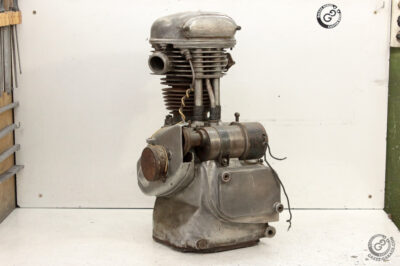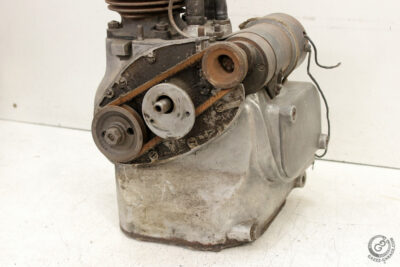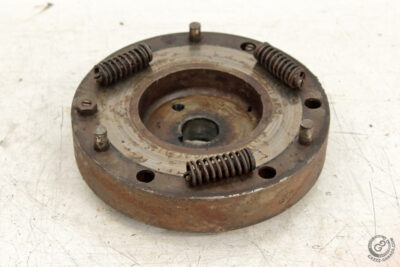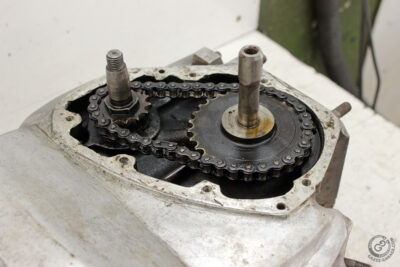And it’s time to return to BMW R35 project. The part of work was to disassemble all three engines available. I’ve started from the engine that looked most promising: of early type (with cylinder head ventilation connected to the crankcase), complete with alternator and ignition unit and even with thread for exhaust nut not totally destroyed. It was obvious that someone already worked on the engine, and my guess was the goal of work was rather to make the engine have a look of working unit, than being run actually.
 But honestly, it would be rather a wonder of the century to encounter a 70 years old engine with no traces of previous meddling. And at least I encountered no seized hardware. First stage of dismantling was very easy. I removed the alternator:
But honestly, it would be rather a wonder of the century to encounter a 70 years old engine with no traces of previous meddling. And at least I encountered no seized hardware. First stage of dismantling was very easy. I removed the alternator:

 Then it was time for the cylinder head.
Then it was time for the cylinder head.




 Once I removed the cylinder head I got a confirmation of my idea about the engine: traces of superficial cleaning were clearly visible on the head and piston, but it was obvious that the engine had never run after it.
Once I removed the cylinder head I got a confirmation of my idea about the engine: traces of superficial cleaning were clearly visible on the head and piston, but it was obvious that the engine had never run after it.



 When it came to the crankcase unpacking, I became too involved in the process and simply forgot to take photos regularly. Therefore, I have a photos of engine with flywheel removed and a couple of photos of flywheel itself (with improvised Woodruff key that likely wouldn’t work anyway):
When it came to the crankcase unpacking, I became too involved in the process and simply forgot to take photos regularly. Therefore, I have a photos of engine with flywheel removed and a couple of photos of flywheel itself (with improvised Woodruff key that likely wouldn’t work anyway):

 But I shot no photos of the clutch disk.
But I shot no photos of the clutch disk.
Then it was time to remove the oil pan, the oil pump, the timing chain, the threaded bolt for V-pulley and the crankshaft with the rear plate and the bearing. And again, I managed not to shoot photos of the crankshaft, the camshaft and so on and so forth. However, since these units turned out to be in much better condition than those from the other two engines, I think I’ll yet have occasion to make photos of them.



 Meanwhile, here are photos of an empty crankcase to finish this part of the BMW R35 story.
Meanwhile, here are photos of an empty crankcase to finish this part of the BMW R35 story.










